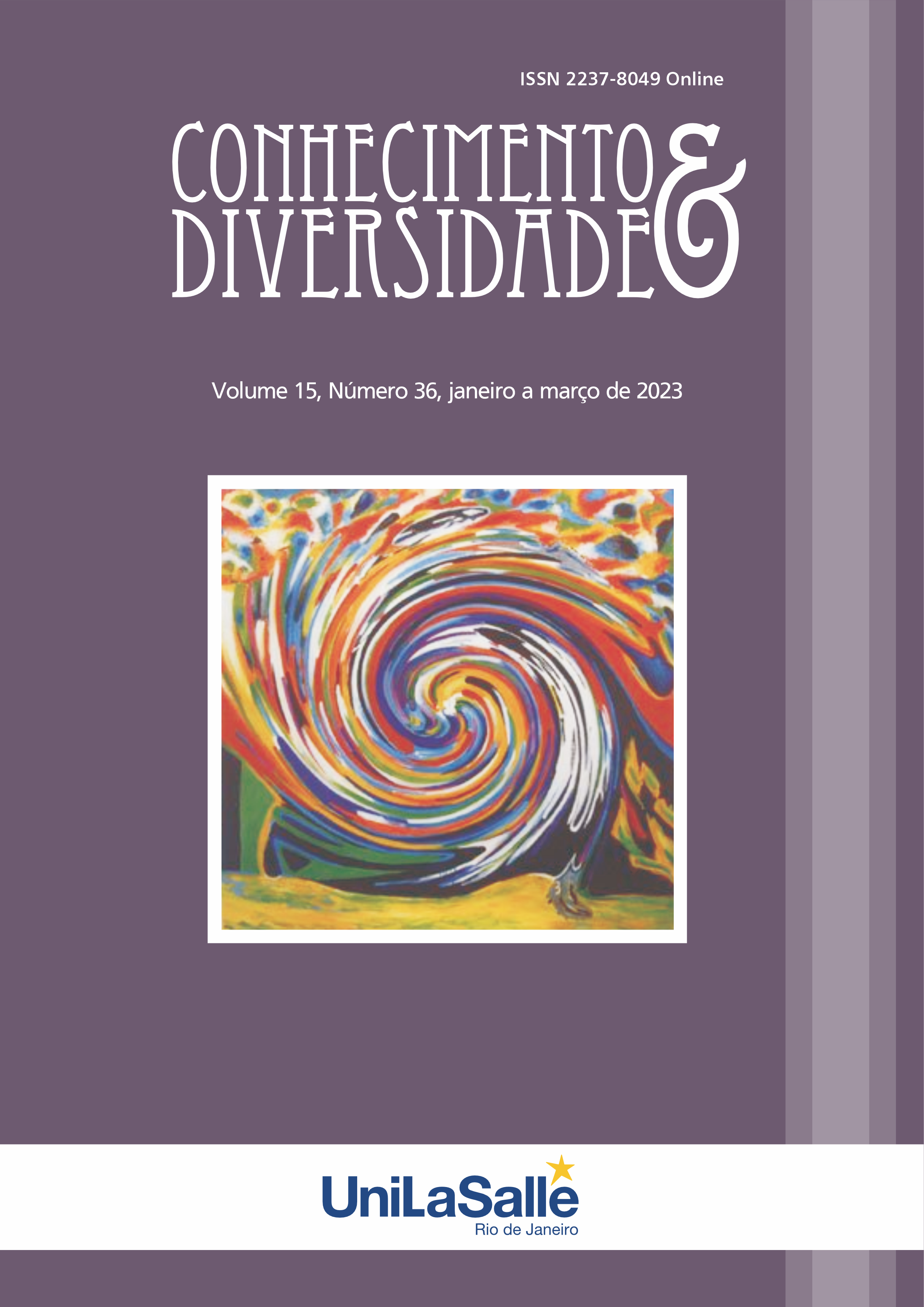EXAME DAS MOTIVAÇÕES DOS ESTUDANTES UNIVERSITÁRIOS PARA PARTICIPAR DA ATIVIDADE FÍSICA
DOI:
https://doi.org/10.18316/rcd.v15i36.10799Palavras-chave:
Atividade Física, Motivação, FumarResumo
O objetivo deste estudo é examinar nos elementos que influenciam a motivação dos estudantes da Universidade de Idr para participar do exercício físico. Este estudo contou com a ajuda de 300 estudantes. Foram exploradas as conseqüências do fumo, do status de vida e do gênero na motivação dos estudantes universitários para o exercício físico. A Escala de Motivação para Participar em Atividade Física (MSPPA), que Tekkurşun e Cicioglu (2018) adaptaram em turco, foi usada para avaliar a motivação dos alunos para participar em atividade física. Como resultado, tanto os estudantes do sexo feminino como do masculino na pesquisa parecem estar altamente motivados a se envolverem em exercícios físicos. É reconhecido que as variáveis ambientais e individuais influenciam favoravelmente o engajamento de ambos os grupos no exercício físico. Foi demonstrado que estudantes que vivem com sua família e estudantes que não fumam estão mais motivados a se envolverem em atividade física.
Referências
Boone, S. D., &Brausch, A. M. (2016). Physical Activity, Exercise Motivations, Depression, and Nonsuicidal Self‐Injury in Youth. Suicide and Life‐Threatening Behavior, 46(5), 625-633.
Cetin C., Erdogan A., Yolcu M. (2008). Baydar M. L., Measuring Daily Physical Activity of the Students of the Department of Physical Therapy and Rehabilitation with Metabolic Holter: Ankara University Faculty of Medicine Journal. 61(4) 196-201.
Dagkas S., Stathi A. (2007). Exploring Social and environmental factors affecting adolescents' participation in physical activity. European Physical Education Review. 13(3):369–384.
Demir G. T., Cicioglu H.I. (2018). Scale of Motivation to Participate in Physical Activity (SMPPA): Validity and reliability study. International Journal of Human Sciences. 15(4), 2479-2492.
Dilek A.N. (2022). Investigation of Sports Sciences Faculty Students' Motivation for Participation in Physical Activity in Terms of Various Variables. The Asian Institute of Research Education Quarterly Reviews. 5(4), 79-89.
Erdogan, R. (2021). determination of the nutritional habits and physical activity levels of the students of the school of physical education and sport during the pandemic period. OPUS– International Journal of Society Researches, 17(Pandemi Special Issue), 3276-3295.
Erdogan, R., & Bozkurt, E., & Tel, M. (2021). Investigation of healthy life and physical activity levels of prospective teachers, International Online Journal of Educational Sciences, 13(1), 194-204.
Güngörmüş H.A., Yenel F., Gürbüz B. (2014). Determination of Factors Motivating Individuals to Recreational Exercise: Demographic differences. International Journal of Human Sciences. 11(1), 373-386.
Kiessling P. B. (2019). Relationships Between Leisure-Time/Work-Time Physical Activity/SittingTime And Leisure Satisfaction/Physical Activity Motivation. Submitted to the faculty of the University Graduate School in partial fulfillment of the requirements for the degree Doctor of Philosophy in the School of Public Health Indiana University.
Ozer, M.K. (2010). Physical Fitness. Ankara: Nobel Publication Distribution.
Panão, I. and Carraça, E. V. (2020). Effects of exercise motivations on body image and eating habits/behaviors: A systematic review. Nutrition & Dietetics, 77(1), 41-59.
Rebar, A. L., Alfrey, K.-L., & Gardner, B. (2021). Theories of physical activity motivation. In Z. Zenko& L. Jones (Eds.), Essentials of exercise and sport psychology: An open access textbook (pp. 15–36). Society for Transparency, Openness, and Replication in Kinesiology. https://doi.org/10.51224/B1002
Reed, J. A., Einstein, G., Hahn, E., Hooker, S. P., Gross, V. P., & Kravitz, J. (2010). Examining the Impact of Integrating Physical Activity on Fluid Intelligence and Academic Performance in an Elementary School Setting: A Preliminary Investigation. Journal of Physical Activity &Health. 7(3), 343-351.
Sabah S. (2022). Examination Of The Motivation Of Secondary School Students For Participating In Physical Activity. IJETSAR (International Journal of Education Technology and Scientific Researches). 7(17), 546-570.
O'Loughlin E. K., Sabiston C. M., deJonge M. L., Lucibello K. M. and O'Loughlin J. L. (2022). Associations among physical activity tracking, physical activity motivation and level of physical activity in young adults. Journal of Health Psychology. 27(8), 1833-1845.
Valatkaitytė V., Česnaitienė V.J. (2019). Relationship Between Health Literacy, Physical Activity, Motivation And Barriers Of People Aged 30–50 Years. Baltic Journal of Sport & Health Sciences. 2(113); 19–27.
Verkooijen K. T., Nielsen G. A., Kremers S. P.J. (2009). Leisure time physical activity motivates and smoking in adolescence. Psychology of Sport and Exercise. 10, 559–564.
Villarreal E. G., Kabiri L. S., Diep C. S., Perkins H. Y., Perkins-Ball A. M. And Rodriguez A. X. (2022). Living Situation and Physical Activity in the COVID-19 Pandemic Among American Private University Students. International Journal of Exercise Science. 15 (4), 1064 - 1074.
Wilson, D. B., Smith, B. N., Speizer, I. S., Bean, M. K., Mitchell, K. S., Uguy, L. S., et al. (2005). Differences in food intake and exercise by smoking status in adolescents. Preventive Medicine, 40, 872–879.
Downloads
Publicado
Edição
Seção
Licença
Copyright (c) 2023 Conhecimento & Diversidade

Este trabalho está licenciado sob uma licença Creative Commons Attribution 4.0 International License.
Conforme recomendado pelo o Public Knowledge Project, a RCD adota para seus artigos uma licença CREATIVE COMMONS: Atribuição CC BY 4.0.
Esta licença permite que outros distribuam, remixem, adaptem e construam sobre o seu trabalho, mesmo comercialmente, desde que lhe dêem crédito pela criação original.
Esta é a licença mais adequada oferecida.
Recomendado para a máxima divulgação e uso de materiais licenciados.



